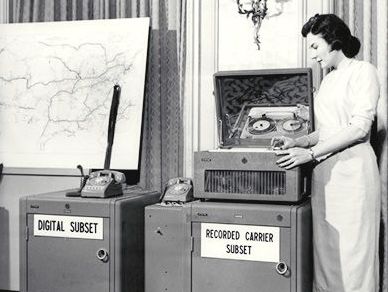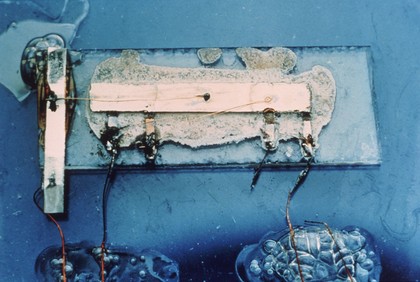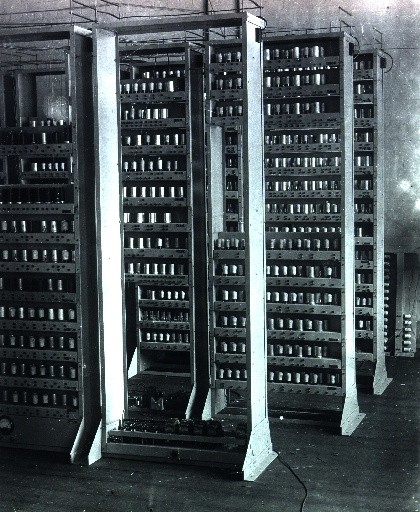5 technologies to thank the 1950s for
The decade that brought us microchips, modems and more

Considered as one of the most conservative decades in recent memory the 1950s were a time when technology underwent a dramatic evolution.
It was less than a decade after the second World War and science was in its element; technology that had only been postulated and pondered was suddenly becoming reality.
The microchip, the modem and the personal computer popped into existence and changed the world. It sounds dramatic but can you imagine if the microchip did not exist today? Say goodbye to your iPhone.
In this decade, two men solved the integrated circuit puzzle and now corporate giants like Intel, IBM and Toshiba are galloping head first towards 0.01nm technology.
How much have these technologies changed since they began?
1. The first microchip/integrated circuit
Looking a lot like the slightly dishevelled uncle that gets drunk at family parties, the first microchip bears little resemblance to its modern equivalent. Jack Kilby of Texas Instruments and Robert Noyce of the Fairchild Semiconductor Corporation (he also co-founded Intel) are credited as being co-founders of the first integrated circuit, in spite of the fact that their creations were six months apart.
Get daily insight, inspiration and deals in your inbox
Sign up for breaking news, reviews, opinion, top tech deals, and more.
Where Jack Kilby managed to develop the first working model in 1958, Robert Noyce's version had some necessary improvements – such as the use of silicon instead of germanium and interconnecting the components efficiently. The first commercially viable microchips were released by the Fairchild Semiconductor Corporation in 1961 and were about the size of your baby finger.
They consisted of one transistor, three resistors and one capacitor, a far cry from the tiny chip of today that can hold 125 million transistors.

FIRST CHIP: It's hard to believe that this innocuous design changed the face of computing forever [Image: Texas Instruments]
2. The first stored program computer
This brings us to the very first stored program computer, EDSAC. While sitting just outside the boundaries of the 1950s in that it delivered its very first computation in 1949, it was in the 1950s that modifications to this computer made history.
The Electronic Delay Storage Automatic Calculator (EDSAC) was one of the first British computers and the LEO 1 (Lyons Electronic Office 1), built by J. Lyons and Co, was the first computer used for business applications devised on the EDSAC model.
EDSAC used mercury delay lines for memory and derated vacuum tubes for logic. Information was input using 5-hole punched tape and output was spat out by a teleprinter. David Wheeler, the man who received the first ever Computer Science PhD, invented the subroutine with EDSAC and co-wrote the first book on programming in 1951.
However, the best part, in 1952 A S Douglas created OXO, noughts and crosses, for the EDSAC with graphical output to a cathode ray tube. This is believed to have been the world's first video game to use a digital graphic display. It's a far cry from the gaming laptop of today. Or home PC. Or desktop.

NOT A NETBOOK: EDSAC is about the size of a small house, with tubes that are over five feet long [Image: Computer Laboratory, University of Cambridge]
- 1
- 2
Current page: Microchips and stored program computers
Next Page Modems, optical fibre and credit cards